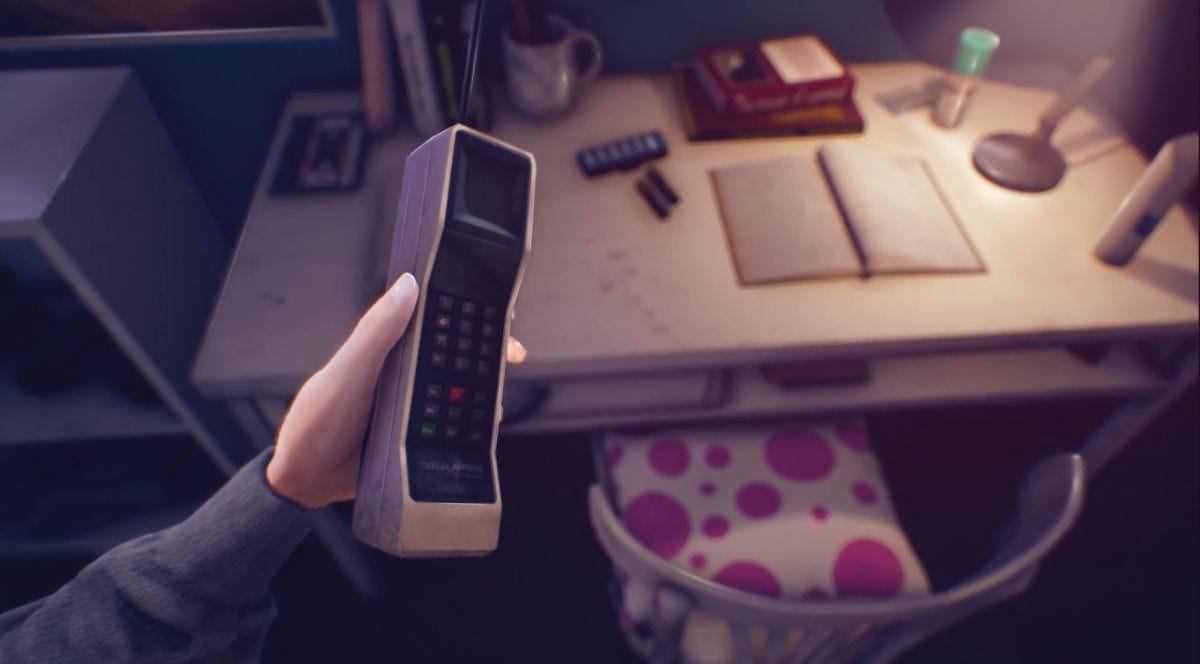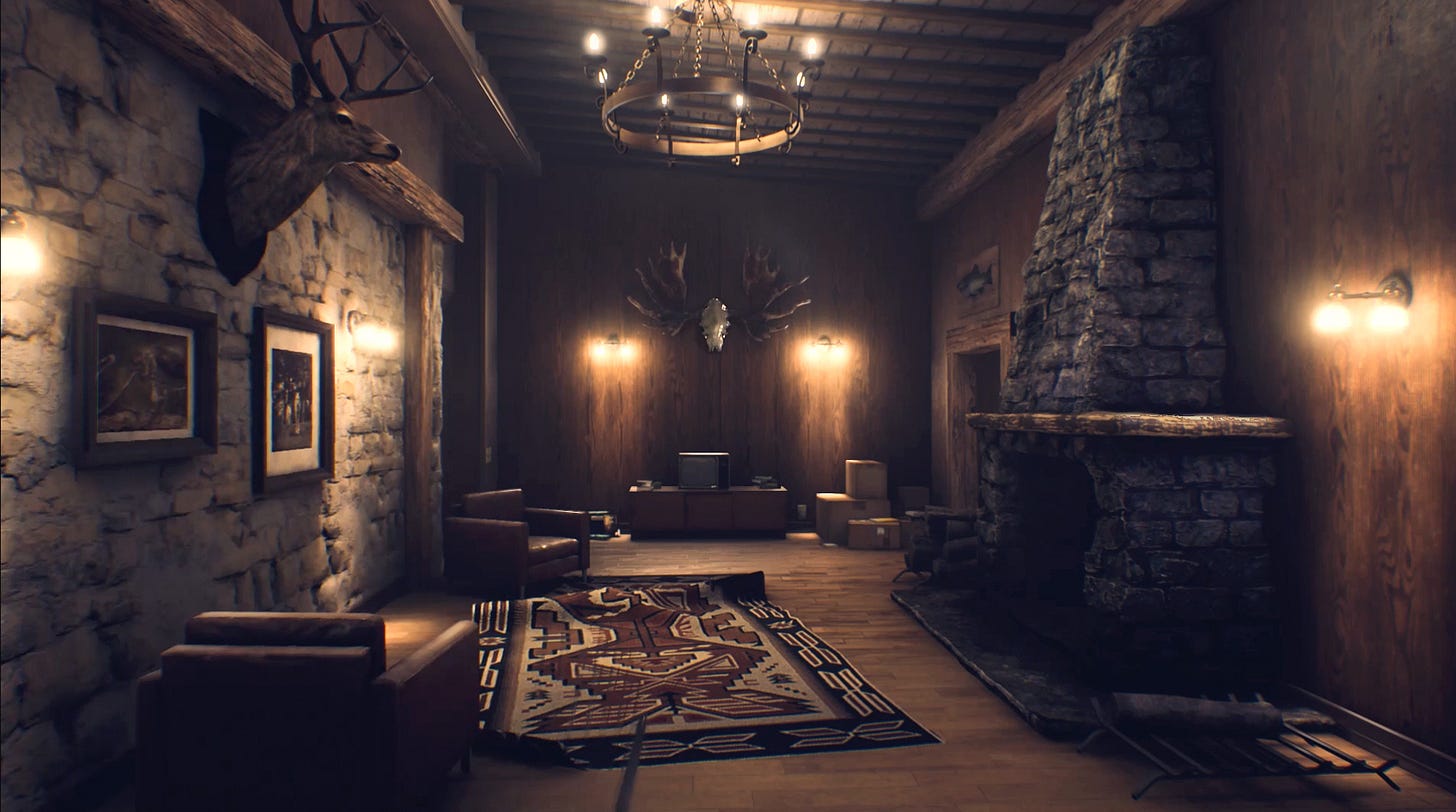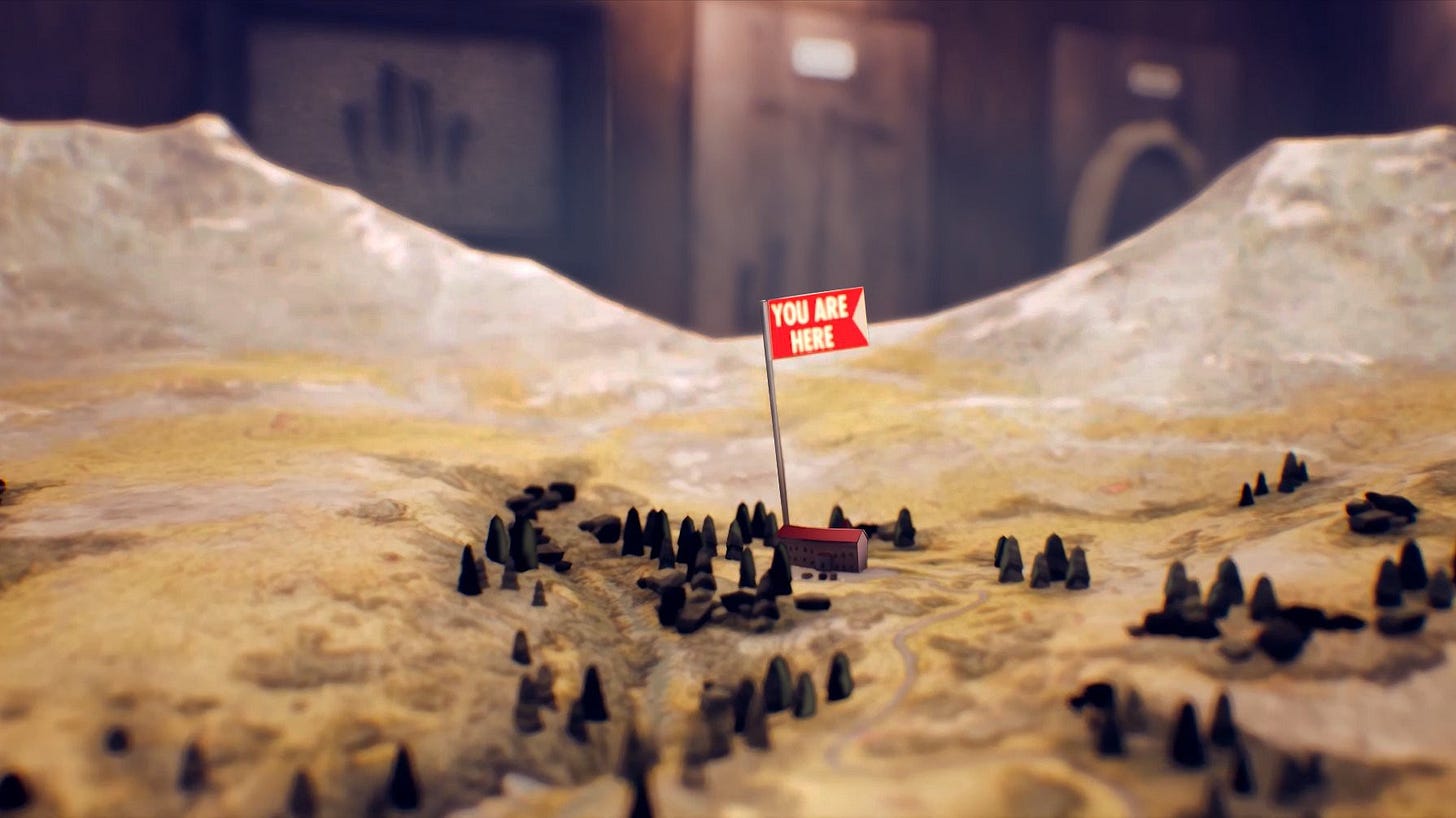The Suicide of Rachel Foster | Review
Over the last five years, video games have begun to branch out. Increased access to technology and a shifting marketplace have given independent studios to develop new ideas which, previously, couldn't have succeeded in the mainstream. And a lot of those game rule. Increased thoughtfulness has given rise to games that ask players to do more than kill aliens with space guns. There's been an entirely new genre of games that seek to impact the player, rather than having the player change the game. These games, labelled "walking simulators" by real gamers insecure men, are beautiful tone pieces. They explore high concepts and moral problems. And The Suicide of Rachel Foster is the latest title to attempt to move that genre forward.
In Firewatch players control Henry, a man who has taken a job as a National Parks Ranger, to avoid the hardship caused by his wife's early-onset dementia. Henry strikes up a friendship with fellow park ranger Delilah. The two investigate a mystery that appears to involve disappearing teenagers, a vast government cover-up, and mysterious people living in the mountains. Players might even suspect aliens are afoot. But as a massive fire consumes the park, Henry learns that there was no conspiracy. Instead, it's just a series of tragic coincidences. Like life, so often, is.
The easy in-genre comparison points for The Suicide of Rachel Foster are Gone Home and Firewatch, which isn't tremendously surprising. Those are two of the most successful walking simulators ever. They gave players a quick and easy in, allowed them to make genuine connections to the characters, and quickly sent them to explore a world where something unspoken seemed to lay below the surface. That structure soon became the template for these types of all walking simulators. Both games also zigged when players expected them to zag.
Gone Home, on the other hand, tracks the story of a 21-year-old woman named Katie who returns to her family's home from abroad. She explores the big empty house, piecing together what happened to her family. Again, players may have suspected ghosts or goblins to jump out from a shadow. But instead, the game is all about human drama. Katie's younger sister realizing she's gay. Katie's parents working through trouble in their relationship. And the scars that our past leaves on us. The only ghosts in Gone Home are the ones the characters make for themselves.
So you can see that these games are not the typical video game fare. They're characteristically placed squarely in the middle of the human condition. Even the term "walking simulator," which was used initially to belittle the games, comes from the fact that players can't do anything superhuman. They can walk, and they can read things. These games are representations of real life. Unfortunately, The Suicide of Rachel Foster attempts to move the genre forward by asking the exact wrong question: What if your real-life had a buck-wild conspiracy you couldn't escape?

The Execution of Rachel Foster
The main problem with The Suicide of Rachel Foster is that it wants to have a big reveal. While it is influenced by Gone Home, Firewatch, and all the other walking simulators that came before it, it's influencers expand beyond video games. From the outset, it's clear that the game wants to be an interactive cross between The Shining and Twin Peaks. And there's nothing wrong with that impulse. There are a lot of thematic elements there that work very well. Big creepy hotels, isolation, and mysterious death are just a few examples that unite the titles. The problem isn't in the idea. It's in the execution.
Three-quarters of the way through, The Suicide of Rachel Foster starts to fall apart. And it's doubly unfortunate that this happens just as the dramatic tension is reaching it's highest point. The game spends the better part of two hours building you up for an unexpected rug pull. Then, when it finally does pull the rug out from under you, you find yourself standing on yet another rug. A surprising rug, to be sure. And maybe one that is worth investigating for a moment or two. But ultimately, just another rug.
Or, perhaps it's best put another way. The all-time excellent walking simulator games zig when you expect them to zag. The Suicide of Rachel Foster doesn't zig. But it also doesn't zag. It just continues forward in a straight line, relentlessly pursuing its agenda. It seems entirely uninterested in bringing the players along with it. If they happen to get there two, that's great. But if not, then this game is not going to slow down to bring them along.
Expectations, Reality, and What's In Between
This is the section where I'm going to get into spoilers for The Suicide of Rachel Foster. If you don't want to read about those, skip to the next section now. This is your only warning.
Players in The Suicide of Rachel Foster play as Nicole, a young woman in her early twenties who is forced to return to her family's hotel after years of pretending it doesn't exist. Nicole's parents divorced after she and her mother discovered that her father was having an affair with Rachel Foster, a sixteen-year-old who later killed herself. Now, both Nicole's parents are both dead, and she must return to her dad's hotel, assess its condition, and sell it. Her mother's dying wish was for Nicole to give the money to Rachel's family.

Unfortunately, players barely get enough time to grapple with that viper's nest of thematic difficulty before they're informed, off-handedly, that Rachel was pregnant at the time of her death. And, what's more, she may now be haunting the hotel. So, put mildly, a lot is going on in this video game.
Accompanying Nicole on her adventure is Irving, a FEMA employee familiar with the hotel and surrounding area. Irving communicates with Nicole via cell phone. He generally prompts her on to the next quest, gives her background into the story, and warns her that it isn't safe to leave the hotel due to a raging snowstorm.
At some indeterminant point, Nicole's priority goes from assessing the hotel's condition and getting out quickly, to relitigating the most traumatic episode of her life. As she moves through the hotel, turning over rocks — or doing routine hotel maintenance to turn over more rocks later — she finds little clues that something nefarious is going on in the hotel. A wide range of evidence — including teenage girl beauty supplies, cryptic notes in her father's books, and doors which seem to lock themselves — tell Nicole that something is afoot in the hotel.
This is where Rachel Foster goes astray from other walking simulators. At this point in their narrative, other games have fallen back on a surprisingly simple, human, explanation to their mysteries. Critics sometimes call them underwhelming. So I understand the impulse to try and go big with something more involved. However, the actual reveal is too strange and complicated even to try and go into here — partially because the game doesn't do a fantastic job of explaining it. In the end, there feels like there are too many loose threads and unanswered questions. For a game that seemed to have such ambition moving the genre forward, players could easily be left feeling that something was left unfinished.
End spoilers.
The Bottom Line
There is a really good game somewhere within The Suicide of Rachel Foster. The visuals are gorgeous, and the sound design is brilliant. Across the board, the technical aspects of the game are top-notch, and it is a joy to play.

Unfortunately, the game itself is too burdened for those elements to shine through. The creators are ambitious with what they're trying to do. But their ambition overshadows the foundation they've built, and the final product ends up feeling unstable at best.
Furthermore, the topics the game grapples with are heavy, and the narrative breezes over them too quickly. The creators' focus is also centred on convincing players that the hotel could be haunted, and they don't spend enough time on the moral questions their plot stirs up.
Finally, the game doesn't seem to make a lot of sense. That's rarely an important priority in a space dominated by squashing living mushrooms and shooting alien invaders. But Rachel Foster wants players to solve the mystery it provides. And this leads to the logical gaps feeling cavernous when they inevitably crop up.
What do you think? Have you played The Suicide of Rachel Foster? What did you think? Which parts were your favorite? Let us know on Twitter or Facebook. And don't forget to subscribe to our YouTube channel for all our Let's Plays and videos of our favorite games!

